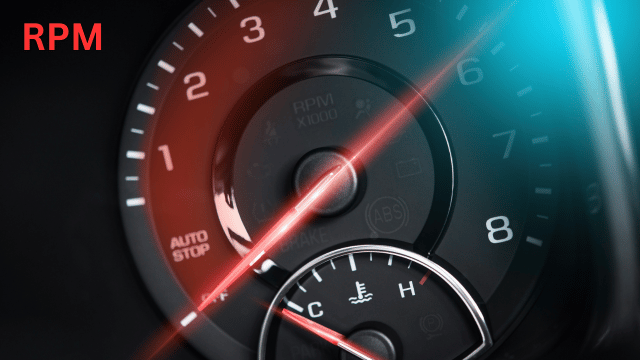If you’ve ever dabbled in mechanics, electronics, or even fitness, you’ve likely encountered the term “RPM.” But what does RPM stand for, and why is it important? In this blog post, we’ll explore the full form of RPM, its meaning, and its significance in various fields.
What Does RPM Stand For?
RPM stands for Revolutions Per Minute. It is a unit of measurement that indicates how many times an object rotates around its axis in one minute. The concept of RPM is crucial in understanding the speed at which something is spinning, whether it’s a car engine, a fan, or even a workout bike.
Where Is RPM Used?
RPM is a versatile term used in several areas, each with its own importance. Let’s look at some of the common fields where RPM plays a key role:
- Automobiles:
- Engines: In cars, RPM is used to measure the engine’s rotational speed. The RPM gauge, often referred to as the tachometer, shows how fast the engine’s crankshaft is spinning. This information helps drivers know when to shift gears for optimal performance and fuel efficiency.
- Driving Performance: Understanding RPM is also important for improving driving techniques, especially in manual transmission vehicles. High RPMs typically indicate the engine is working harder, which can lead to higher fuel consumption and engine wear if not managed properly.
- Machinery and Manufacturing:
- Industrial Machines: In manufacturing, RPM is used to measure the speed of rotating machinery, such as drills, lathes, and turbines. The RPM of these machines must be carefully controlled to ensure precision and safety during operation.
- Maintenance: Regular monitoring of RPM in industrial machines helps in maintenance, as any unusual RPM readings might indicate a malfunction or wear and tear in the machinery.
- Electronics:
- Fans and Motors: In electronics, RPM is commonly used to measure the speed of cooling fans and electric motors. For instance, computer fans have a certain RPM to ensure the device stays cool and operates efficiently.
- Hard Drives: RPM is also crucial in the performance of hard drives, particularly in older models. The faster the RPM, the quicker the hard drive can read and write data.
- Fitness and Exercise:
- Exercise Equipment: RPM is used in fitness, particularly with stationary bikes and treadmills. It measures the rate at which you pedal or run, helping you track and control the intensity of your workout.
- Training: By monitoring RPM, athletes and fitness enthusiasts can tailor their training to specific goals, such as improving endurance or speed.
- Music and Audio Equipment:
- Turntables: In the world of music, RPM is essential for vinyl records. The RPM indicates the speed at which the record spins on the turntable, with common speeds being 33 1/3, 45, and 78 RPM. The correct RPM ensures the music plays at the right pitch and tempo.
Why Is RPM Important?
Understanding RPM is crucial for several reasons:
- Performance Optimization:
- In vehicles, knowing the RPM helps drivers optimize performance, balance fuel efficiency, and prevent engine damage by avoiding excessively high RPMs.
- Safety:
- In industrial settings, maintaining the correct RPM is vital for the safety of operations. Machines operating at incorrect RPMs can lead to accidents or faulty products.
- Equipment Longevity:
- Monitoring RPM in machinery and electronics can help extend the lifespan of equipment by ensuring it operates within the recommended speed range.
- Precision and Accuracy:
- In fields like manufacturing and music, RPM ensures precision and accuracy. For instance, the correct RPM in a lathe ensures a clean cut, while the right RPM in a turntable ensures the music is played as intended.
- Effective Training:
- In fitness, RPM is used to gauge workout intensity, helping individuals train more effectively and achieve their fitness goals.
How Is RPM Calculated?
RPM is calculated by counting the number of complete rotations an object makes in one minute. The formula to calculate RPM is:
[ \text{RPM} = \frac{\text{Number of Rotations}}{\text{Time in Minutes}} ]
For example, if a wheel rotates 300 times in one minute, its RPM would be 300.
Conclusion
RPM, or Revolutions Per Minute, is a fundamental concept that spans across various fields, from automotive and industrial machinery to electronics, fitness, and music. Understanding RPM not only helps in optimizing performance and safety but also plays a crucial role in maintaining the longevity and precision of equipment. Whether you’re driving a car, operating machinery, or working out, keeping an eye on RPM can make all the difference in achieving the desired outcome.












